This post is a contribution to the Classic Movie History Blogathon hosted by Movies Silently, Silver Screenings, and Once Upon a Screen. Be sure to read all the posts from the different years and catch up on the history that you may have missed.
1936
The year that was 1936 was a year where change abounded both throughout the world and at the cinemas. Looking back more than 75 years later, it is easy to see how things were progressing, both in good ways and in bad. Some of these things were necessary to the improvement of our world. In March of that year, Boulder Dam (later to become Hoover Dam)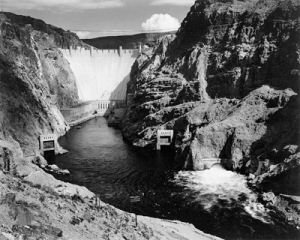 was finally completed after a dedication ceremony in September of ’35 by President Roosevelt. In November, the historic San Francisco Oakland Bay Bridge, connecting the San Francisco Peninsula to the East Bay area, opened to the public. (And boy are we glad it’s there!) And then later that same month President Franklin D. Roosevelt was re-elected with a staggering majority of the Electoral College vote (523-8), making it the most lopsided victory (going by Electoral votes) in Unites States history. In May, the 35-year-old Margaret Mitchell published her one and only fictional novel, “Gone with the Wind”, taking the country by storm, and earning herself both the National Book Award and the Pulitzer Prize for Fiction. (You’d have to wait three more years for the movie, of course!)
was finally completed after a dedication ceremony in September of ’35 by President Roosevelt. In November, the historic San Francisco Oakland Bay Bridge, connecting the San Francisco Peninsula to the East Bay area, opened to the public. (And boy are we glad it’s there!) And then later that same month President Franklin D. Roosevelt was re-elected with a staggering majority of the Electoral College vote (523-8), making it the most lopsided victory (going by Electoral votes) in Unites States history. In May, the 35-year-old Margaret Mitchell published her one and only fictional novel, “Gone with the Wind”, taking the country by storm, and earning herself both the National Book Award and the Pulitzer Prize for Fiction. (You’d have to wait three more years for the movie, of course!)
In sports, the first voting for the Baseball Hall of Fame was held, electing five notable players in the inaugural class, including Babe Ruth, 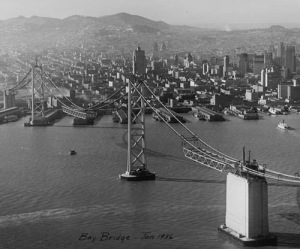 Ty Cobb, and Walter Johnson. The New York Yankees beat the New York Giants in the World Series, four games to two, starting a streak of four consecutive World Series titles for the Yankees. If that isn’t enough, 1936 is also the year that saw the birth of future legends Albert Finney, Dennis Hopper, Roy Orbison, Jim Henson, Wilt Chamberlain, Don Drysdale, Buddy Holly, and of course, Robert Redford.
Ty Cobb, and Walter Johnson. The New York Yankees beat the New York Giants in the World Series, four games to two, starting a streak of four consecutive World Series titles for the Yankees. If that isn’t enough, 1936 is also the year that saw the birth of future legends Albert Finney, Dennis Hopper, Roy Orbison, Jim Henson, Wilt Chamberlain, Don Drysdale, Buddy Holly, and of course, Robert Redford.
But not everything was happy and great with the world. 1936 brought on its fair share of trouble (and even more so). July saw the beginning of the Spanish Civil War that would last until 1939. King George V died in January, and his eldest son became King… but not for long. By December, Edward VIII advocates the throne (causing quite a scandal) and King George VI begins his reign. 1936 also saw the passing of author Rudyard Kipling, actor John Gilbert, as well as the shocking death of legendary film producer Irving Thalberg, at the very young age of 37.
And then there was Adolf Hitler. In early March, Hitler and Nazi Germany broke the Treaty of Versailles by reoccupying the 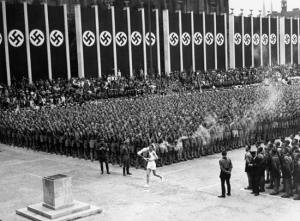 Rhineland, and by December it became mandatory for every German boy, between the ages of 10-18, to join the Hitler Youth Organization. Germany also hosted the Olympic Games where Hitler was able to promote “his government and ideals of racial supremacy”. He even went so far as to attempt to disallow certain races and Jews from the Olympic games. My, what the power of hindsight can do.
Rhineland, and by December it became mandatory for every German boy, between the ages of 10-18, to join the Hitler Youth Organization. Germany also hosted the Olympic Games where Hitler was able to promote “his government and ideals of racial supremacy”. He even went so far as to attempt to disallow certain races and Jews from the Olympic games. My, what the power of hindsight can do.
Looking back now in the early part of 2014 it is easy to see mistakes and problems because we have already learned the history. Just as this is true throughout the world, it is true in the film industry. If you were to look at the Best Picture nominees for any year, it is an almost certainty that the same films would not be nominated again because we have to power of hindsight, and we now understand which of these films seem great, and which ones are great. In 1936, there were 10 Best Picture nominees:
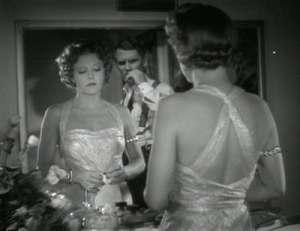 “Anthony Adverse”
“Anthony Adverse”- “Dodsworth”
- “The Great Ziegfeld”
- “Libeled Lady”
- “Mr. Deeds Goes to Town”
- “Romeo and Juliet”
- “San Francisco”
- “The Story of Louis Pasteur”
- “A Tale of Two Cities”
- “Three Smart Girls”
Would these films still be nominees if we could do it all again? Certainly not. As the years have passed, films like the Deanna Durbin musical “Three Smart Girls” and the George Cukor directed “Romeo and Juliet”, while still good, entertaining movies, just lack being “Best Picture” quality. “Anthony Adverse”, “The Story of Louis Pasteur”, “A Tale of Two Cities”, and that year’s Best Picture winner, “The Great Ziegfeld”, also are films worth seeing, but mostly have fallen by the wayside. In all likelihood, most if not all of these six films would not be nominated if we could have a do-over. The remaining four, however, still hold up today. “Dodsworth” is a wonderful drama that showcases the talents of stars Walter Houston and Mary Astor, and the directing talent of William Wyler. “Libeled Lady” might seem an interesting Best Picture choice, but when you watch this film it is easy to see that it is a flawless production.
“Romeo and Juliet”, while still good, entertaining movies, just lack being “Best Picture” quality. “Anthony Adverse”, “The Story of Louis Pasteur”, “A Tale of Two Cities”, and that year’s Best Picture winner, “The Great Ziegfeld”, also are films worth seeing, but mostly have fallen by the wayside. In all likelihood, most if not all of these six films would not be nominated if we could have a do-over. The remaining four, however, still hold up today. “Dodsworth” is a wonderful drama that showcases the talents of stars Walter Houston and Mary Astor, and the directing talent of William Wyler. “Libeled Lady” might seem an interesting Best Picture choice, but when you watch this film it is easy to see that it is a flawless production. 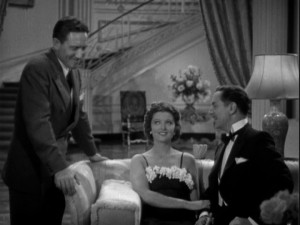 Of course the combination of William Powell, Jean Harlow, Myrna Loy, and Spencer Tracy is enough to make any film one of the best of any year. “Mr. Deeds Goes to Town” is not only one of the best of 1936, it’s one the best of director Frank Capra’s career. It earned him a much deserved Oscar (his second of three), and is just as entertaining today as it was in 1936. Last, but not least, we have “San Francisco” starring Clark Gable, Jeanette McDonald, and Spencer Tracy. This doesn’t seem to be a movie that everyone has seen today, but I certainly feel it is still deserving of a nomination. Of course now that we have some open spots, it’s important to see if there were other films that could step up and fill these new vacancies.
Of course the combination of William Powell, Jean Harlow, Myrna Loy, and Spencer Tracy is enough to make any film one of the best of any year. “Mr. Deeds Goes to Town” is not only one of the best of 1936, it’s one the best of director Frank Capra’s career. It earned him a much deserved Oscar (his second of three), and is just as entertaining today as it was in 1936. Last, but not least, we have “San Francisco” starring Clark Gable, Jeanette McDonald, and Spencer Tracy. This doesn’t seem to be a movie that everyone has seen today, but I certainly feel it is still deserving of a nomination. Of course now that we have some open spots, it’s important to see if there were other films that could step up and fill these new vacancies.
Fortunately, there are plenty of other noteworthy films released in 1936. It is interesting to look at a few different sources to find films that have lasted. For instance, the American Film Institute has done their countdowns of the “Greatest American Films of All Time”, and on their list the only two films from 1936 are Charlie Chaplin’s absolutely brilliant “Modern Times” and what is quite possibly the best of the Fred Astaire/ Ginger Rogers collaborations, “Swing Time”. How these films were not nominated in 1936 is a real mystery to me. We could also take a glance at the foreign films from that year which include Jean Renoir’s “The Crime of Monsieur Lange”, “Le Roman d’un tricheur” (or “The Story of a Cheat”), which was directed, written, and starring Sacha Guitry, and from Sweden there was “Intermezzo” which starred a young Ingrid Bergman in the role that would grab the attention of producer David O. Selznick. There were a couple of notable British films as well, including William Cameron Menzies’ “Things to Come”
and what is quite possibly the best of the Fred Astaire/ Ginger Rogers collaborations, “Swing Time”. How these films were not nominated in 1936 is a real mystery to me. We could also take a glance at the foreign films from that year which include Jean Renoir’s “The Crime of Monsieur Lange”, “Le Roman d’un tricheur” (or “The Story of a Cheat”), which was directed, written, and starring Sacha Guitry, and from Sweden there was “Intermezzo” which starred a young Ingrid Bergman in the role that would grab the attention of producer David O. Selznick. There were a couple of notable British films as well, including William Cameron Menzies’ “Things to Come” 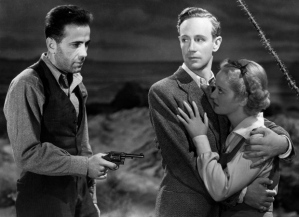 and Alfred Hitchcock’s “Sabotage”, which have gained significant popularity as the years have passed, and with good reason.
and Alfred Hitchcock’s “Sabotage”, which have gained significant popularity as the years have passed, and with good reason.
German director Fritz Lang made his American debut with the Spencer Tracy drama “Fury”, which even with a few flaws, still has a certain greatness. There was “Come and Get It” which featured one of the many perfect performances from Walter Brennan, the Cecil B. DeMille directed “The Plainsman”, and of course there was “The Petrified Forest” starring Leslie Howard, Bette Davis, and Humphrey Bogart. Also, we can’t forget about “Camille”, which although didn’t overwhelm voters in 1936 (only receiving one Academy Award nomination for Greta Garbo’s performance), is now regarded quite highly. Although it is hard to rank Garbo’s performances, “Camille” is both one of 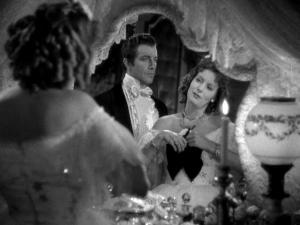 her greatest and most memorable.
her greatest and most memorable.
Rounding out our list of possibilities are the comedy “Theodora Goes Wild” (which earned Irene Dunne a Best Actress nomination), William Keighley’s “Bullets or Ballots”, and “Wife Vs. Secretary” with Clark Gable, Jean Harlow, and Myrna Loy. Last, but clearly not least, is one of the obvious oversights in 1936, “My Man Godfrey”. Although “My Man Godfrey” failed to earn itself a Best Picture nomination, it did receive six other nominations for Best Director (Gregory La Cava), Best Actor (William Powell), Best Actress (Carole Lombard), Best Supporting Actor (Mischa Auer), Best Supporting Actress (Alice Brady), and Best Writing, Screenplay (Eric Hatch & Morrie Ryskind). It was the first film to receive nominations in all four 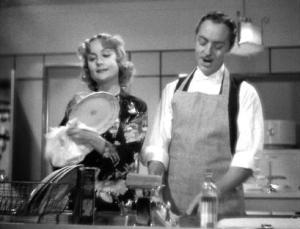 acting categories (as this was the first year awards were given for supporting performances), and it is still the only film to ever receive nominations in all acting categories without getting a Best Picture nomination. Quite an oversight in my opinion, but then again, I have the power of hindsight.
acting categories (as this was the first year awards were given for supporting performances), and it is still the only film to ever receive nominations in all acting categories without getting a Best Picture nomination. Quite an oversight in my opinion, but then again, I have the power of hindsight.
Clearly 1936 was a good year for movies, so much so in fact that it is hard to decide exactly which films should be the Best Picture Nominations, but after more consideration than I thought possible, here is my list of the Power of Hindsight – 1936, Best Picture nominees. Pretty impressive, if I say so myself.

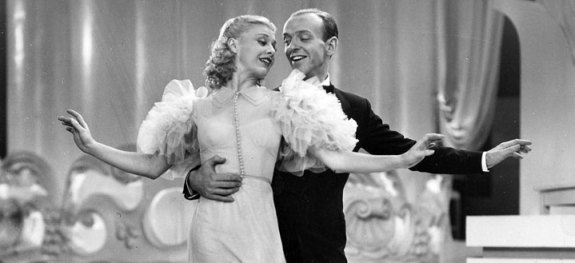
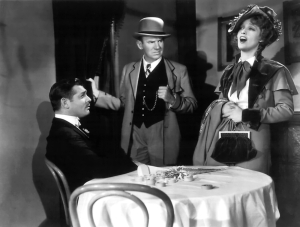
I adore your approach to the year.
I wish I could see what you and the Academy see in “The Great Ziegfeld”. It’s never worked for me. I would give that spot to one of “These Three”, “The Prisoner of Shark Island”, “Rembrandt”, “Show Boat” or “Three Godfathers”. Ah, the power of hindsight.
LikeLike
“The Great Ziegfeld” filled my tenth slot on this list, and I really wasn’t sure it would make the cut. I am aware of the film’s faults, but I still see something special in the story, and certainly the performances.
With that said, I haven’t seen most of your replacement suggestions, (and I forgot about “Show Boat”!), but have already added them to my watch list. Perhaps after viewing some of these other films, “The Great Ziegfeld” will fall off of my list.
Thanks for adding your thoughts here. I have already given your suggestions much thought.
LikeLike
Love that you mentioned THE CRIME OF MONSIEUR LANGE, one of Renoir’s best and sadly underrated. I think a A TALE OF TWO CITIES still hold up very well, thanks largely to Colman’s performance.
LikeLike
It is a great film of Renoir, and it is quite underrated. I wish more people could see it today.
Colman does give a great performance in “Tale of Two Cities”, but overall I think the film moves quite slowly. I have a hard time sitting still through the whole thing.
LikeLike
1936 was SUCH a great year for Hollywood films. You’ve really done that year justice with your terrific post.
I liked how you recapped several events from 1936, and even included baseball news!
And, may I respectfully say that I would never have forgiven you if you did not include “The Petrified Forest” in your Top Ten.
LikeLike
Thanks for the great compliment, and thanks for hosting this wonderful blogathon.
You know there was no way I could ignore 1936 in baseball, especially when you include the Giants losing. (Go Dodgers!)
As I was writing this post I knew you would appreciate “The Petrified Forest” being here. What I didn’t know, was that when stacked up against these other films, “The Petrified Forest” would be towards the top of the list. I would put it with “Modern Times” and “My Man Godfrey” as the three best from 1936. -Just throwing that out there everybody!
LikeLike
Love taking a walk down memory lane or should I say a tour through history since I wasn’t around in 36. Also, not a bad year for film. Couldn’t agree more with your picks from that year. Hard to top Godfrey for the crazy but I would put Charlie and Modern Times at the top of the list. (Tough one like 39 tough)
A fun read and thanks for including such great photos from that year.
Page
LikeLike
Thanks Page, I’m glad you like my picks. It was such an eventful year and there were so many beloved movies released that it was hard to narrow it down. I’ve down this same thing before for 1954 and 1963, but 1936 made my really examine which films were the best. I do enjoy doing these posts because they give me a chance to form my true opinions. Thanks for sharing your thoughts!
LikeLike
What a good idea for a post. San Francisco is a particular favorite of mine, since I’m a proud native. I like your selections much better than the Academy’s.
LikeLike
Glad to hear it Joe. I’m a California man myself, and lived in S.F. for a couple years during my younger days. It’s so much fun to walk around the history of the city and everytime I watch the movie I am reminded of my time there.
LikeLike
You named so many interesting titles along the way that I began hoping you’d do a revised list and then there it was! While I don’t hate “The Great Ziegfeld,” it does feel about two days long and I’d definitely be another speaking up in defense of “A Tale of Two Cities,” which I actually find pretty rousing, especially going head-to-head with Ziggy. Given the Academy’s distaste for comedy I’m not so much surprised by all of the deserving titles that they passed up, but that they actually got one right in nominating “Libeled Lady.” This was interesting stuff, thanks for fulfilling my hopes with your list at the end!
LikeLike
It’s interesting to see that “The Great Ziegfeld” really is on the bottom of most people’s lists. I guess it all comes down to “The Great Ziegfeld”, “A Tale of Two Cities” or “These Three”. It’s nice that most of us agree on the others though.
LikeLike
Fab post! 🙂 I love 1936 in film! My top favourites are “Swing Time” and “Mr Deeds Goes to Town”, followed by Samuel Goldwyn’s “These Three”.
Your own list of Best Picture nominations is quite brilliant 🙂
LikeLike
“These Three” seems to be a fan favorite that I didn’t expect. It might be time to give that film another chance. Thanks for sharing.
LikeLike
This was a great way to look at the movies and the year! It really is amazing how rankings and estimation shake out over time, once you get away from the trends, crazes, hype, etc of the moment. I have to add another vote for These Three, but can’t quibble with what you have there either. I share your love of San Francisco too. Very fun post
LikeLike
Thanks Kristina. This post was a lot of fun to do, for all of the reasons that you pointed out. Time changes everything I suppose. Thanks for sharing your thoughts!
LikeLike
I saw ‘Libeled Lady’ recently; it is indeed a lot of fun. It’s the first movie where I thought Myrna Loy was really sexy.
LikeLike
She looks so good in that film, but I think she’s beautiful in just about everything.
LikeLike
Great job on highlighting the hits of the year. My Man Godfrey is absolutely my favorite film of the year and The Plainsman wins for so-bad-it’s-good. Loved your Oscar nomination list. If only we had a time machine…
LikeLike
I like the idea of a “so-bad-it’s-good” category. I think I could always find a handful of nominees that fir that description.
LikeLike
It’s interesting how some films highly praised today were overlooked by the public in general and the Academy in 1936. Camille deserved at least a Suporting Actor nomination, and Modern Times, something like Best Picture or Director.
Don’t forget to read my contribution to the blogathon! 🙂
Greetings!
LikeLike
That is completely how I feel about almost every year that Academy Awards have been handed out. Of course rarely do my opinions agree with others anyway. Thanks for stopping by, and for being part of this great blogathon.
LikeLike